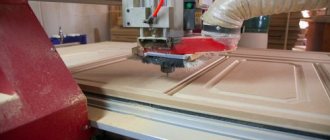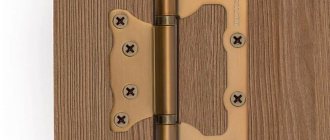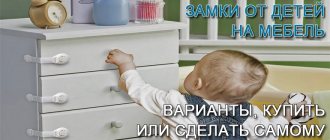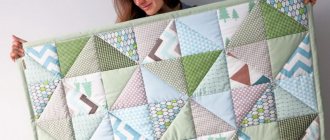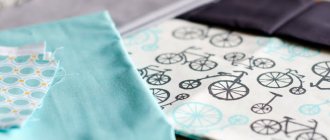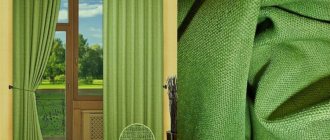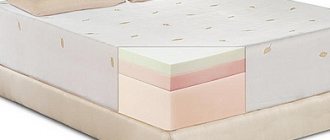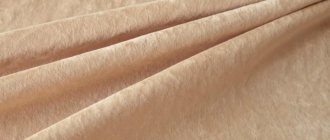Not so long ago, shoes and furniture made of velvety material reminiscent of suede appeared in stores. Nubuck - that’s the name of this substance - is presented in natural and artificial forms. Buyers are advised to learn more about this material in advance: how to care for it, how to use it, the differences between originals and fakes, and physical properties.
What kind of material is nubuck - description
As stated in the free encyclopedia Wikipedia:
“Nubuck is a fine-haired leather that is subjected to chrome tanning during the tanning process. The skin is sanded from the face with fine abrasives such as sand or fine-grained sandpaper. Nubuck is similar in appearance to suede, but is made from other types of leather, mainly from cattle.”
By the way, nubuk and nabuk are misspelled names of the material.
Description in the table:
| What is it called differently | nubuck |
| Natural material or synthetic? | genuine leather and synthetic substitute |
| What does it look like, what does it feel like? | dense, hard, smooth, finely fleecy |
| Application | shoes, clothing, upholstery, leather goods |
| Does it stretch or not? | weak |
| Cleaning Recommendations | dry cleaning with a special brush, eraser, foam |
| Wash | undesirable |
| Drying | at room temperature |
| Kinds | natural nubuck, artificial, nubuck-oil |
Properties
Fine pile on nubuck gives the impression of velvety. The material appears to have an uneven color. Many people find the so-called “plush effect” very attractive, despite the fact that nubuck shoes look stronger and more practical than suede ones. This is true. Due to the use of cattle leather, nubuck is thicker and stronger. But due to the specifics of processing, it is more susceptible to moisture.
Properties of natural nubuck:
| Waterproof | low |
| Breathability | high |
| Impact resistance | high |
| Tensile strength | high |
| Dirt resistance | low |
| Wear resistance | high |
Sanding gives the leather a lighter, more elegant shade, and treatment with chrome salts makes it soft, highly porous, and breathable. At the same time, it becomes vulnerable to moisture. Nubuck swells from water, and after drying it can become too hard and rough.
Kinds
There are 3 types of nubuck:
- Natural. It is a specially treated animal skin. Sometimes leather with mild defects is used to make nubuck. After sanding they become invisible.
- Artificial. It is a type of flock and is made from polymer materials. Finely chopped pile is glued onto a dense textile base (woven or not). Uniform distribution of villi is achieved through a constant electrostatic field. Unlike traditional flock, it has a Teflon coating. Nubuck fabric is rare and is used mainly as upholstery for furniture.
- Nubuck-oil. This is a premium natural material, oiled to protect against moisture. It feels damp to the touch, is darker in color and a little heavier than regular nubuck. Thanks to the fatty film, nubuck oil practically does not get wet and does not become dirty. It is considered the highest quality and most expensive.
A little historical background
We are talking about one of the varieties of flock - a large group of textiles characterized by a characteristic fleecy surface. As a rule, these are non-woven materials, but artificial nubuck can be different - both woven and not, depending on the manufacturing technology chosen by the manufacturer.
It was invented back in the 20s of the last century as a replacement for genuine leather, or rather suede. The resulting material turned out to be much more practical than the natural prototype and quickly won the love of consumers.
And yet, the acquaintance will be incomplete without a detailed description of this stylish polymer canvas.
Advantages and disadvantages
Nubuck is one of the most popular materials for the production of women's and men's shoes. Both genuine leather and substitute leather are in high demand. Their advantages and disadvantages are different.
Table:
| Natural nubuck for shoes | Artificial nubuck for shoes | ||
| pros | Minuses | pros | Minuses |
| Pliable, easily adapts to the shape of the foot, does not rub | Gets wet without using special impregnation | Attractive appearance at low cost | Does not allow air to pass through, due to which feet in such shoes often sweat and freeze |
| Breathable, feet do not sweat in shoes, even if it is hot | Difficult to maintain and requires the use of special cleaning products to maintain a neat appearance | Doesn't get wet | A special brush is required for care |
| Excellent heat retention | Lasting | Lasts 1-3 seasons | |
| With proper care it lasts a very long time | Relatively easy to care for | ||
| Resistant to creases | |||
Caring for nubuck
To ensure that nubuck shoes do not lose their presentable appearance, they must be looked after regularly.
It is recommended to immediately acquire special tools:
- a brush to lift lint and clean dry dirt and dust;
- eraser for erasing stains;
- aerosol with moisture- and dirt-repellent properties;
- cleaning foam;
- spray paint to restore color.
Regular care is as follows:
- Treat boots with a water-repellent aerosol immediately after purchase, and then about once every 1-2 weeks (with regular wear).
- Daily brushing (dry brushing only).
- Dry daily at room temperature and ventilate.
- Washing (replacing) insoles as they become dirty.
- Removing stubborn stains with an eraser.
- Cleaning heavy stains with cleaning foam or soapy water and a soft cloth.
- Dyeing nubuck every 2-3 seasons.
It is recommended to dry thoroughly wet shoes with an electric shoe dryer or use moisture-absorbing bags or newspapers. It is important that the boots dry within 24 hours. The use of alcohol and solvents for cleaning is strictly prohibited. Nubuck shoes should only be stored in a canvas bag or box with ventilation holes.
Artificial nubuck and nubuck oil
Nubuck made from synthetic materials and natural nubuck impregnated with oil are not so demanding to care for. They become less dirty and practically do not absorb water. But even here you cannot do without specialized tools.
For shoes to last for a long time, you need to:
- Use moisture- and dirt-repellent agents.
- Remove dirt and lift the pile with a special brush.
- Air your shoes regularly and wash (change) the insoles.
The difference is that such shoes can withstand wet cleaning more easily. You can wash it with ordinary soapy water. It also holds paint better and practically does not fade. You probably won't need a can of dye. But an anti-sweating foot spray may come in handy.
Differences from suede
Nubuck, leather and suede are used by designers to create different types of clothing - trousers, skirts, raincoats, jackets, hats and gloves, as well as for the production of shoes and accessories. But the materials differ in their characteristics.
Natural suede is made exclusively from deerskin. It is processed, tanned, after which it becomes soft. Only the skin of a young animal is used. It has short soft bristles and a delicate texture. Nubuck is made from buffalo, cow or ox leather. For small items - gloves, key rings, bookmarks - the skin of small calves is used.
Suede is tanned using oils and fats. This is how masters achieve softness and elasticity. Nubuck is treated with chrome plating using fine salt and sand. As a result of this procedure, the material becomes soft, but quickly begins to get wet and gets dirty easily. Nubuck has a fairly short pile, while suede has a longer pile.
Suede is more suitable for long-term use. It is more resistant to moisture and dirt. Natural nubuck quickly absorbs water and dust, is less easy to clean and loses its attractiveness in a shorter time.
Price
In most cases, nubuck shoes cost about the same as leather ones (if you compare shoes of the same model). Suede is priced a little more expensive due to more complex production.
But there are also exceptions. For example, the price for hand-sewn shoes made of high-quality nubuck will be tens of times higher than for suede boots from a chain store. Or another example. Nubuck, made from leather with defects (which, remember, are easily erased during its production) can cost several times less than leather.
The story with the substitute is clear. It's always cheaper:
The average cost of low autumn boots made of natural nubuck is 8-10 thousand rubles. The same replacement model will cost 3-4 thousand rubles.
How to restore the surface?
If the shoes have faded and the color is not as bright as before, they can be painted with paint for suede and nubuck, which is sold in shoe stores. Before painting, you should make sure that the shoes are free of dust, dirt, and grease, otherwise the color will not apply evenly.
It is necessary to spray the aerosol evenly, having previously protected all elements that should not be painted over, and wait until it dries completely.
Important! Do not use leather dyes; they are not suitable for this material. Shoes should be painted before spraying the impregnation.
Reviews
There are extremely conflicting reviews about nubuck for shoes. As often as he is praised, he is just as often criticized. Mostly nubuck shoes appeal to men. Here's what they write about him:
- Olga: “A lot depends on the quality of nubuck. My salamander boots lasted 3 years. And then I threw them away because I was tired of them. I have never thoroughly cleaned it. I just brushed away the dried dirt and wiped away the dusty marks with a cloth.”
- Igor: “I wear only nubuck shoes. I take regular ones, not oil. The main thing here is to buy water-repellent impregnation. It costs like an airplane, but the effect is obvious. Boots do not get wet, salt solutions do not stick, shoes are always clean. Beauty! I thoroughly soak a new pair (pour out 100-150 ml). Then I just refresh it.”
- Lizochka: “I bought nubuck winter boots. This is something! Just stand in them nicely for an hour, that’s all. My feet feel stuffy and sweaty. It’s like walking in rubber boots.”
- Eva: “I’m a shoe fanatic. Which one I don't have. I took boots made of nubuck (artificial) for running in the slush. And cheap, and they don’t become limp. There is no discomfort in wearing. My feet don’t sweat, they’re as comfortable as wearing slippers.”
- Natalya: “I bought red nubuck boots. Oh, and I suffered. Better than with suede shoes. You could at least wash them with a damp cloth. But nubuck gets a little wet, and after drying, disgusting stains and stains remain. You just need to clean it with a special product. But still, after cleaning, the paint washes off. The color of the boots on the toes is very different from the top. It is impossible to match the paint to match. I will never buy nubuck shoes again.”
Questions and answers
How to distinguish natural nubuck from artificial?
Natural material costs many times more. In addition, it is heavier, softer and more pleasant to the touch. If the nubuck is not impregnated with oil (nubuck-oil), then when a drop of water hits the surface, a dark spot will form. On artificial material, water will not leave any traces, will not be absorbed, but will rather roll off or dry out. But the surest way to distinguish a craft is to pay attention to the markings. Products made from genuine leather always have a mark in the form of a stretched animal skin. Synthetic nubuck is marked with a diamond.
Which shoes are better, natural nubuck or artificial?
Shoes made of genuine leather are always more valuable. It is warmer, more comfortable, and more durable with proper care. Synthetic nubuck shoes will not be as comfortable, but they will be easier to care for. In addition, she is not afraid of rain, does not change color from water, and does not shed.
Nubuck is a high-quality material for shoes. Natural boots are comfortable to wear, warm, elastic and durable. They will not tear for 3-5 years or longer. But they can quickly lose their attractiveness. Nubuck does not tolerate rough handling. It should not be rubbed, scratched, left wet or dirty. If you're not prepared to maintain it regularly, it's best to save your shoes for dry weather or choose a pair made from traditional smooth leather.
Traditional methods of cleaning
If the pollution is insignificant, for example, greasy places have appeared on the sofa or bag, and there are no specialized products at home, “folk wisdom” will come to the rescue. The table describes recipes for homemade solutions for effectively cleaning nubuck.
Table - Folk recipes for cleaning nubuck
| Recipe | What you will need | How to clean |
| To remove stains and grime | — Water — 1 l; - table vinegar - 15 ml | — Dampen a soft sponge in the solution; - apply the composition over the entire surface; - additionally walk through especially dirty places; - blot the excess with a soft cloth or paper towels (without pressing); - dry |
| — Water — 200 ml; - ammonia - 50 ml | ||
| To raise the pile | — Steam (you can use a steam generator, a boiling kettle) | — Clean the material from dust and dirt; — direct a stream of steam to the surface; - keep a distance of 20 cm |
These recipes will not solve global problems, but they can remove light stains. They are convenient to use for cleaning upholstered furniture coated with nubuck. Especially if there are children or allergy sufferers in the house, and contact with “chemicals” may be unsafe.
Knowing how to care for nubuck at home, you can safely look at the display cases with things made from this fashionable material. And maybe in the coming season we can show off in “indecently beautiful” boots.
Video on the topic

